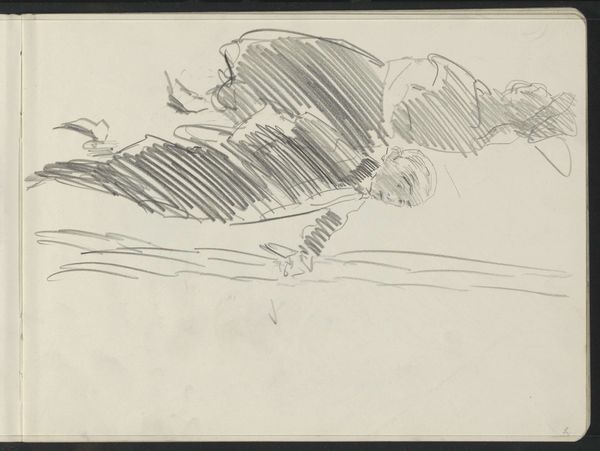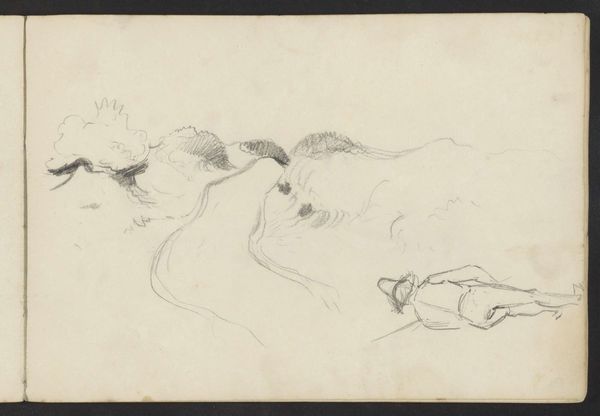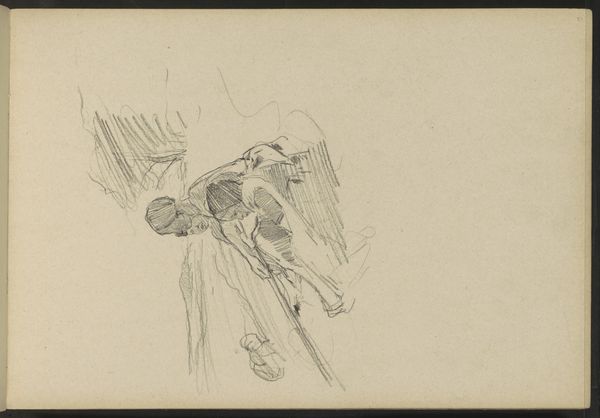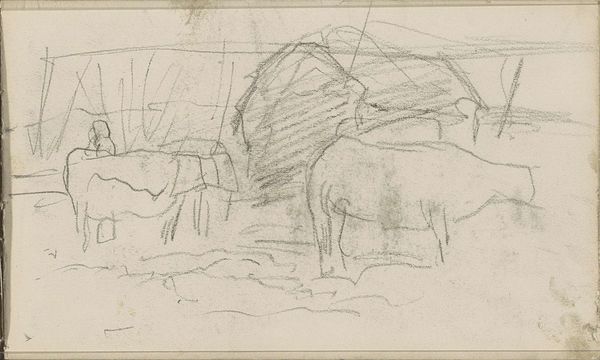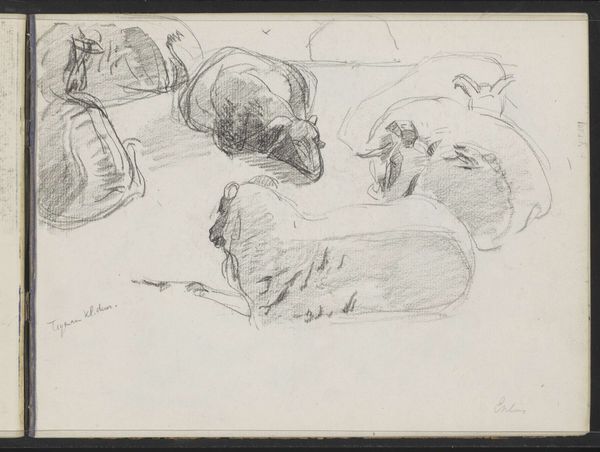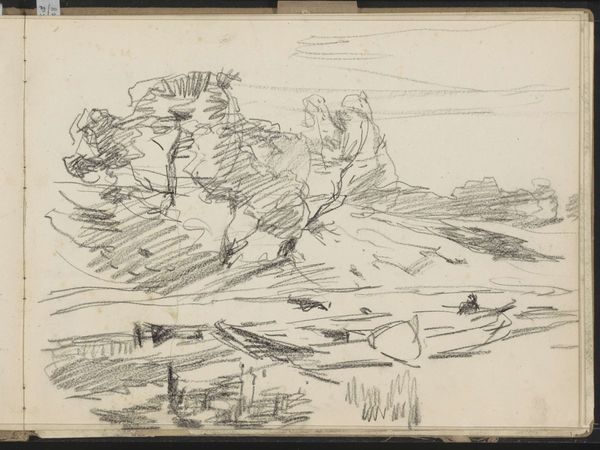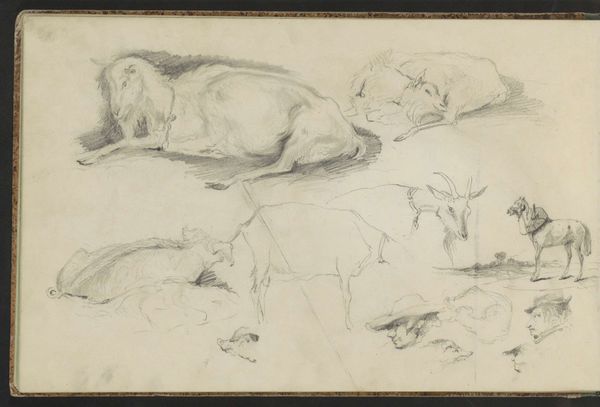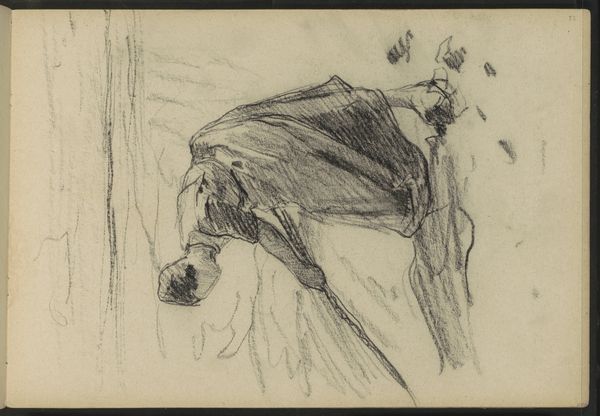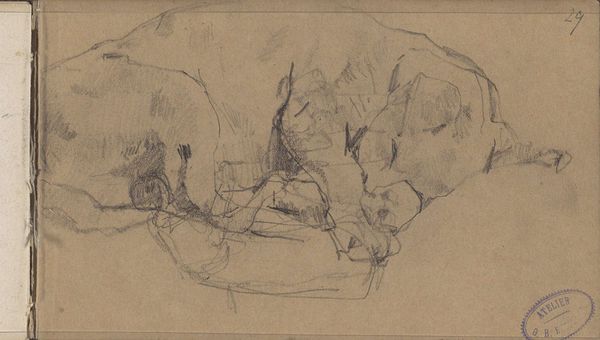
drawing, paper, pencil
#
drawing
#
ink drawing
#
pen sketch
#
landscape
#
figuration
#
paper
#
pencil
#
realism
Copyright: Rijks Museum: Open Domain
Editor: Here we have Ferdinand Oldewelt's "Liggende schapen te Exloo," created around 1904 to 1912, employing both pencil and ink on paper. There's a quiet, almost meditative quality to it, despite being a fairly simple sketch of sheep. How do you interpret this work from a formal perspective? Curator: Well, focusing solely on its intrinsic properties, note the stark contrast created by the layering of pencil and ink. Oldewelt uses line weight variations, a key structural component. Observe how the thicker, darker lines define the sheep closest to us, pulling them forward, while lighter pencil strokes create a sense of depth. What strikes you about the composition itself? Editor: The placement of the sheep, almost like stacked forms, leads your eye around the page in a circular motion. Is that deliberate, do you think? Curator: The rhythm, I propose, originates in how Oldewelt arranges the sheep to generate visual equilibrium. Consider the subtle geometry: the horizontal lines of the ground against the rounded forms of the sheep. It introduces tension and resolution simultaneously. Notice also the contrast of negative and positive space. The unworked areas around the forms enhance the solidity of the resting animals. Editor: I see it now; it's a rather deliberate construction, even for what seems like a quick sketch. The stark contrast definitely gives it an interesting weight. Curator: Indeed. The interaction of these elements—line, tone, composition—construct the drawing's internal logic and communicate meaning independent of its subject matter. What does contemplating its form contribute to your comprehension of Oldewelt's vision? Editor: It makes me appreciate the artistic choices behind representing a simple pastoral scene, that the artist’s intentions with lines and shades really determine the emotion in this drawing. Curator: Precisely! The work stands as a testament to the communicative power inherent in form itself, a pure manifestation of artistic intention.
Comments
No comments
Be the first to comment and join the conversation on the ultimate creative platform.


